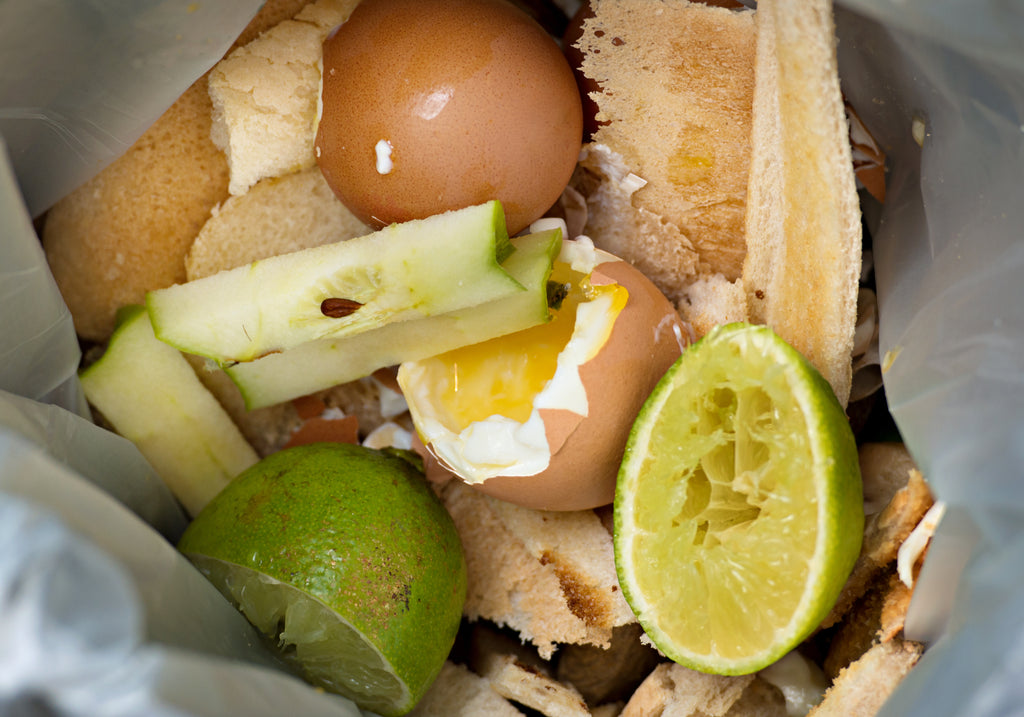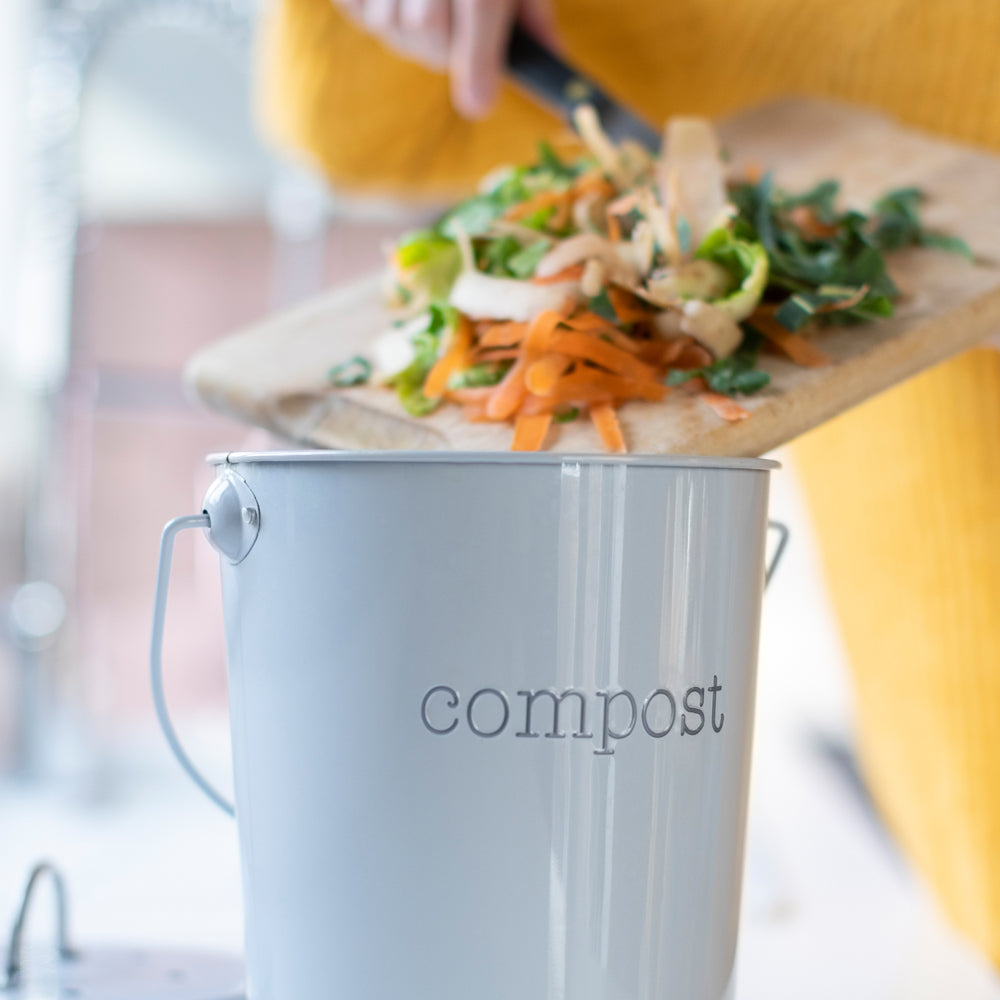Color me weird, but I love grocery shopping. Something about the organizational haven of supermarkets and health food stores makes me go bonkers every time.
It means the second I step into one, my carefully laid plans can fly out the window. I go in for bread, and come out with ingredients for a three course meal. And since I’m 5’1” and shop only for myself, that overspending can easily turn into wasted food.
I’m sure you’ve been there – throwing out brown apples, limp greens and mouldy berries. All thanks to overbuying and poor storage.
It’s something we need to worry about: In New Zealand alone, Kiwis throw away 157,380 tonnes of food a year. That is equivalent to 271 jumbo jets of food that have to go somewhere to rot, instead of being eaten. It’s bad for the environment and puts us significantly out of pocket – all this wasted food is worth about $1.17 billion a year. Yikes!
The good news is you can make positive changes almost instantly.
I grew up in a household where food waste was a BIG no no. My mum was also an absolute kitchen queen – she could whip up an amazing meal from what looked to me like a fridge full of nothing but condiments! So despite my obsession with supermarkets, I mostly avoid food waste – all thanks to ma. Here I share some of my tips and tricks on how to save food, save money and save the planet.
How to store different kinds of food
Depending on the kind of food, different kinds of storage will work best. Here’s a quick outline.

Dry goods
Air tightness is the name of the game. If you have a stash of Tupperware - awesome. But don’t rush out and buy anything just yet. Old glass jars are also fantastic, especially if you’re transitioning to plastic-free. They’re especially awesome because you can see what’s in there without opening the lid (you should still label, though!). Seeing ingredients can spark recipe inspiration, and remind you to stock up when you see levels getting low.
Potatoes, sweet potatoes and onions
Store these in a cool, dry, dark place, such as a cupboard. Keep onions well away from the other two, though – they release moisture which can make things mouldy.
Pumpkins also work well stored in a cool, dry place until you’re ready to use them. Fantastic for making the most of the winter season deals.
Fridge
Your fridge and freezer are your absolute best weapons against food waste. The cold air slows the action of the cells, which means slower decay! I know you know how to use a fridge, but I’m going to give you some helpful tips anyway.
Set the right temperature: below 5°C/ 41°F.
Know where to put things: knowing what food should go where can help it last extra long. Fruit and veges go right at the bottom, ideally in the designated drawer or section (not all over the place like my flatmates like to think). Food that should last months, like fermented goods and sauces, go on the shelf right above the fruit and veges. The rest of your fridge is for food you’re likely to use within a week: leftovers, cheeses, hummus and yoghurt.
Choose good containers: a great and simple way to preserve vegetables is to store them in airtight containers. I store almost all of my veges in this way, from leafy greens and half-used onions to carrots and broccoli. I’ve found that they can last me a week or longer when stored like this. Line the bottom of the container with a cloth to absorb any excess moisture, and stack the vegetables on top – easy as! This is also a fantastic way to ensure you know exactly what needs using up and what can be incorporated into your next meal.
Let mushrooms breathe: Keep mushies away from plastic, or they’ll get mouldy fast. Instead go for cardboard or paper bags.
Freezer
Hey you, yes you, meet your new best friend, the freezer! Freezers are amazing at cutting back on food waste and the quicker we learn the ways of the freezer, the better.
Portion out leftovers: Hello, easy lunches! if you cook enough to feed an army, divide up the leftover portions into containers. Keep one portion for lunch and put the rest in the freezer. When stored correctly, leftovers can last safely in the freezer for years but they’ll be at their best if you eat them within three months.
Label everything: if you don’t want to accidentally defrost blended feijoas instead of soup, best you learn quickly the importance of labelling. This way you can trust your flatmates or partner to bring out exactly the right dish for dinner tomorrow night!
Dealing with freezer burn: Freezer burn is easy to avoid – just keep your freezer at an even temp (so only put cold food in there) and eat everything within three months. If you’ve found a bit of burn, no drama. Just chop it off!
Freeze bread: Pro tip: store your bread in the freezer. It defrosts perfectly – as fresh as the day you froze it. Thank me later when you don’t have to throw it out after a week.
Heat food well: Freezers do a good job of keeping bugs working slowly, but it doesn’t eliminate them. Make sure you reheat your frozen food to mouth-scalding temps before tucking in.

Food waste - how to nip it in the bud
Storing food correctly is important, but we also need to rethink how we shop and consume too. Here are my top tips.
Write a list
Like many other zero-waste and low-impact approaches to life, time and organisation are key! It really doesn’t need to be too complicated, all you need is a little bit of time beforehand to write a list and grab your reusable bags.
Knowing what’s in your pantry and fridge allows you not only to plan your meals and use what you already have (meaning less food waste), but means you literally only buy exactly what you need, saving you time and money – woohoo! I like to keep a checklist on my phone so I can add to it whenever, easily mark what I’ve already picked up and not have to worry about losing any pieces of paper.
Don’t shop when you’re hungry
Don’t do it. Just don’t.
Turn waste into vege stock
Consider freezing your vegetable peels and ends in a large ziplock bag in the freezer to boil up and use for stock once the bag is full. My favourite combinations include bay leaves, squeezed lemons, leeks and onion peels. Such a great base for the perfect winter dish and it really is the epitome of getting the most from your produce.
Know the difference between use by and best before
Use-by dates let you know when food may no longer be safe to eat – you should be very cautious about eating food after its use-by date. Best-before dates, however, are about food quality, rather than safety. So your yoghurt might get all separated and your bread a bit stale, but it’s still certainly safe to eat.
Get good at judging portion sizes
My absolute pitfall! If you’re following a recipe, check to see how many servings the recipe is for and adjust accordingly. If you aren’t following a recipe or have never made the dish before, Google suggested quantities of dried rice or pasta per person. Checking dried quantities versus cooked quantities means more accurate portion sizes.
Getting ‘rid’ of food
Even with the best efforts, there could be times when you’re staring down a fridge full of food you can’t do anything with. Here’s what to do with it.
Donate it
When I was a student living in Copenhagen, I volunteered weekly at a fantastic organisation that would rescue food from stores around the city and donate it to members of the community. Although the food would be deemed too poor to sell, it was really completely edible and could still last a week if stored correctly. Not only did they save truckloads from being sent to landfill each week, it also meant that food was going to those in need.
And the great news? There are now so many organisations and groups doing the same all over the world, such as Kairos Free Store, apps like Olio, or my trusty local community facebook page – they have a free stand where you can drop off extra baking, cans, fruit and vegetables. If your mandarin tree is going crazy, bring a pile into your office and share the love. If you’re living with others you could also set up a ‘free shelf’.
Compost it
If you’ve exhausted all other options for eating, reworking or giving away food, composting should be your next option.
If you don’t have a home compost unit, see if your council provides compost bins, consider paying for composting pick ups, or invest in a home compost unit. The internet has a wealth of knowledge on the different options, and what would work best in your space - or head to your local hardware store for advice.
What are your favourite food storage tips?

 Impact
Impact Blog
Blog Store Locator
Store Locator



